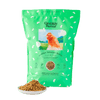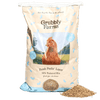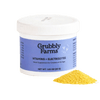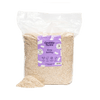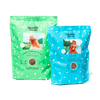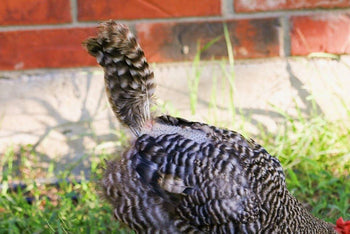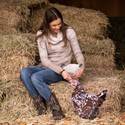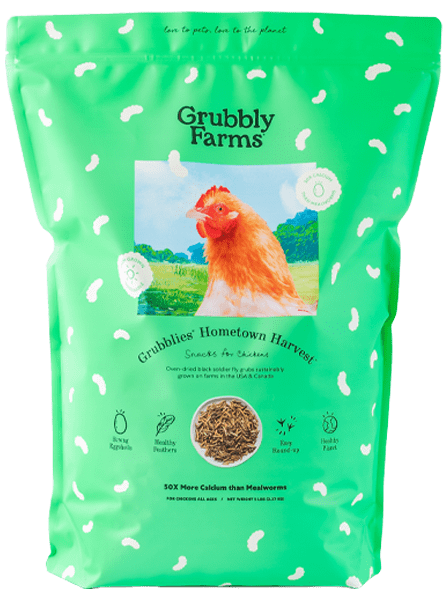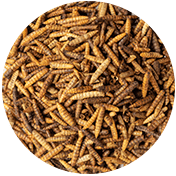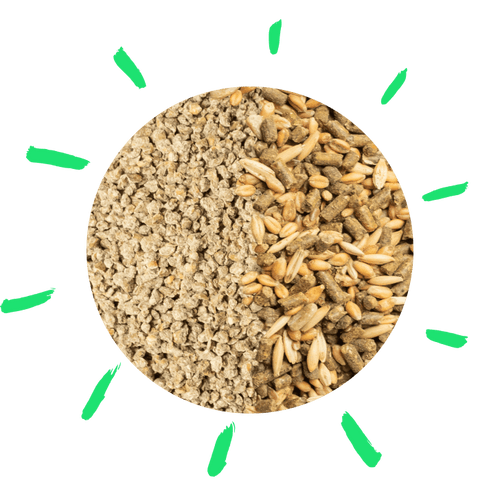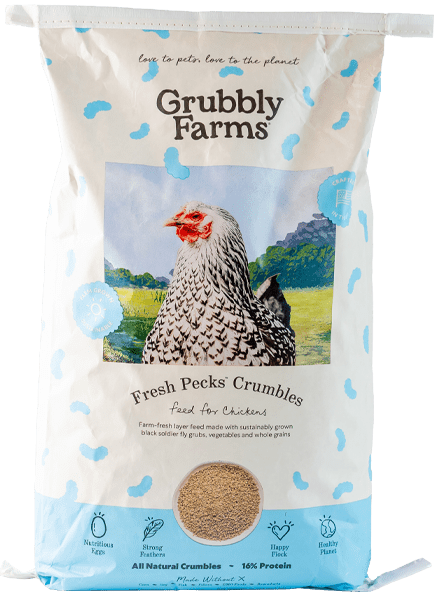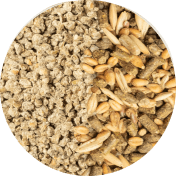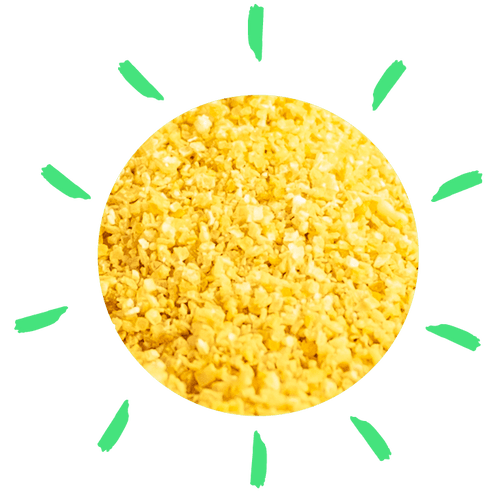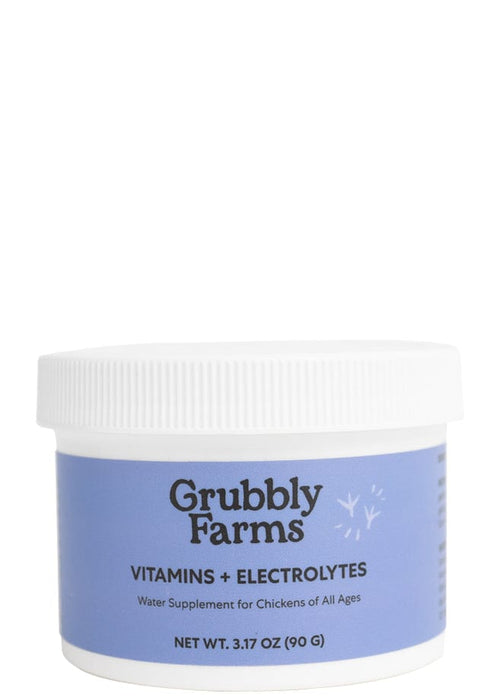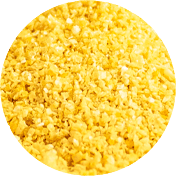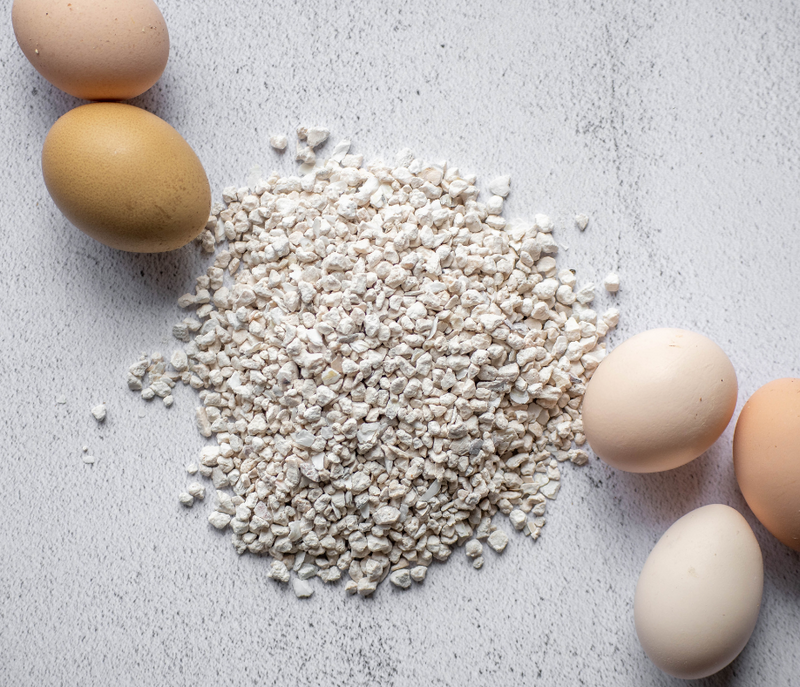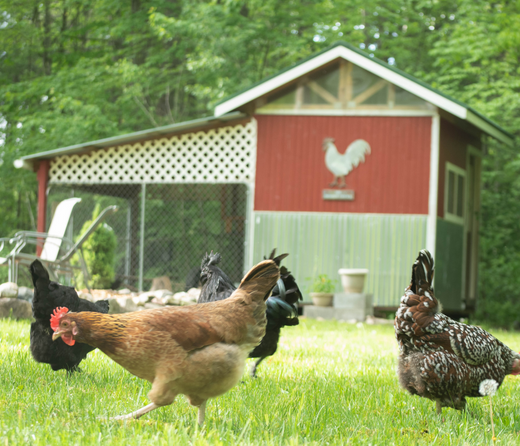It’s that time of year again when we may start to notice more feathers scattered around the coop than eggs. Did someone have a pillow fight in here? Are my girls alright? Nope. It's molting season! Find out exactly why your chickens are losing their feathers--and what you can do to help ease the process.
What Is Chicken Molting?
A mature chicken typically loses his or her older, dull and spent feathers sometime during fall. It’s similar to how reptiles shed their skin--it's a natural 'shedding' that is not a cause for concern, health-wise.
Why Do Chickens Molt?
The natural process of shedding feathers allows the growth of new and healthy feathers before cold winter days arrive. This is similar to how dogs shed then grow a winter coat.
This process serves an important purpose. Old, dirty and broken feathers do a terrible job in providing insulation and protection. So, the chickens shed the old ones and grow new feathers to better protect themselves in cold weather.
Your old worn sweatshirt won’t keep you as warm as a new one that hasn’t been through the wash 100 times, right? This is the same for your chickens’ feathers.
What triggers molting?
Shorter daylight hours and the natural end to a laying cycle are the most common triggers for a molt. This typically occurs at the end of summer through autumn.
There are also other factors that can contribute to molting:
- Stress
- Dehydration
- Malnutrition
- Illness
- Extreme heat
Keeping your flock healthy is essential in avoiding these other triggers to an untimely molt.
A broody hen may also molt after sitting on and hatching eggs. In her effort to make sure her eggs and chicks are safe, the stress on her body can trigger molting.
Do Chicks Molt?
Baby chicks will also go through a series of three ‘mini’ molts as they mature, but that is a little different from the seasonal molting adult chicken experience. A young chicken typically does not go through its first molt for the first 15 to 18 months of its life. For example, if your chickens hatched in the spring months, they will more than likely not go through a fall molt until the next year.

How Long Do Chickens Molt?
The length and duration of a molt will vary. Just like their individual personalities, each of your little feathered family members will have their own molting “schedule.”
Some will molt slowly, in what we often refer to as a “soft” molt. In a soft molt, a chicken will slowly drop its feathers over an extended period of time. Sometimes it takes about a month, but we’ve had chickens that seem to molt for three or four months!
Some chickens will look fine one day, but lose a large amount of feathers seemingly overnight or in a quick span of days. This is what we often refer to as a “hard” molt. While chickens that go through hard molts look worse than those that go through slow molts, the entire duration of their molt will be shorter than the soft molters.
The duration, type, and progress of molt will depend on each chicken’s genetics. This will even be more apparent if you have a larger flock. Molting is also directly related to laying. Hens that are eggcellent layers often go through a hard, faster molt whereas lazy layers take their time and may go through a soft, prolonged molt.
Molting Laycations: When Chickens Stop Laying Eggs!
To make new feathers, chickens need an immense amount of protein. Making eggs also requires the use of protein. In order to grow new feathers to protect them through the winter, hens take a break from laying and take a “laycation.” The laycation is considered the end of the year’s laying cycle.
Other Factors to Your Flock's Laycation
Shorter Days: The amount of daylight hours also contributes to the cessation and reboot of a laying cycle. A hen needs about 14 to 16 hours of daylight to trigger the hormones that play a part in laying eggs. Daylight hours shorten in the winter and are not enough to continue the regular egg-laying process. As the amount of light a hen senses decreases each day during the fall, this triggers a reaction of hormones that may stop the reproduction process (egg laying) and start the molting process.
Wintertime Self-Preservation: In favor of protecting herself with a better feather coat, and to allow her body to rest, a hen will slow or stop laying in favor of self-preservation. Winter time is essentially the hen’s natural way of slowing down and taking a little winter vacation!
Five Tips to Help Your Flock Through Molting Season
Did you know that a chicken feather is composed of over 80% protein? With that much protein in each feather, we need to make sure that our chickens get some eggstra help during their molts so that they grow protective and strong new feathers!
Here are some tips to help your feathered friends through their little rough patch.
Tip 1: Avoid that “Sweater Weather” Urge
There are some cute memes and photos on the internet with chickens in sweaters. There’s no denying how unbelievably adorable your little fluffy butts will look in a mini sweater, but our first tip is sadly NO SWEATERS! Let’s save it for our doggies and cats (if you insist).
Seeing our ragged birds, especially the ones experiencing hard molts, can be heartbreaking. We have to fight the desire to anthropomorphize our birds and avoid putting them in little sweaters. They’ve thrived for thousands and thousands of years without sweaters--they don't need one now!
No Sweaters. And Hands-Off.
Regrowing feathers is an uncomfortable process, and their skin is ultra-sensitive with the pin feathers poking out. Each of those little pin feathers are full of nutrient rich blood that nourishes the new feather as it grows. So, handling them too much or forcing them to put on a sweater will be painful and uncomfortable for our sweet little molting chickens.
Tip 2: Hold the Hugs
For the same reasons our chickens won’t want a sweater, they also don’t want hugs… even if they look miserable and sad.
In fact, our cuddly and friendly chickens may even run away from us if we reach out to touch them. You may find that even your sweetest hens will avoid being near you or other chickens during their molt. Don’t worry, their sweet personalities will return after they have grown in their new feathers!
Growing those feathers back out can be quite painful and irritating. Let's pick them up only if absolutely necessary, and make sure our children also know that the kinder thing to do is feed them a healthy snack rather than touching their painful spots accidentally.
Tip 3: Increase Protein in their Diet

Outside of molting season, we should be feeding our chickens a quality feed at about 16% protein. During molting season, consider switching the feed to a formula that is a bit higher in protein, to at least 18%. Another option is to supplement your flock’s feed with a protein-rich healthy snack (see tip 4 below).
Consider A Higher-Protein Starter Feed
In her book The Beginner’s Guide to Raising Chickens: How to Raise a Happy Backyard Flock, Anne Kuo recommends that you purchase a chick starter or grower formula and either mix that with your flock’s naturally-balanced feed, or feed the chick starter or grower formula to your flock.
A chick starter or grower formula is higher in protein than a regular layer feed. Depending on the brand and formula, they range from 18% to 20% in protein content. You can also switch to (or mix in) a broiler formula or gamebird feed, which typically consists of 20% to 25% protein.
Continue Free-Choice Calcium
Make sure you also always provide a free-choice source of calcium to your flock every day, especially if you switch to, or supplement, a non-layer formula. Even if the hens stop laying during their molt, they will still need some supplemental calcium to keep other body functions working as well.
Tip 4: Provide Protein-rich Snacks
Protein-rich snacks are essential for molting chickens, especially if you do not wish to switch their feed. Rather than choosing a “treat” that should be using sparingly, provide a healthy snack to supplement your molting chickens’ diet.
Black Soldier Fly grubs (Grubblies) are both high in protein, and have 50x more calcium than mealworms. Give your flock a couple of handfuls of Grubblies daily to help provide them with a healthy boost they need. Grubs are a reliable source of the essential proteins that promote healthy feather production, and are especially important when molting.
A daily boost of protein from Grubblies (32% guaranteed analysis) helps speed up the molting process, which will help your chickens grow new beautiful feathers and help them regain normal levels of energy and egg output.
Other High-Protein Snacks
Sprouting lentils, seeds, and grains can also create a nutritious, protein snack for your flock! The process of sprouting increases the protein availability in the food and makes it more digestible. Fermenting chicken feed* also does the same thing! The process of fermentation makes the protein in the feed more readily digestible for a chicken’s body to use during the molt.

Tip 5: Limit Stress
Another way to help your flock through their molt is to limit their stress. They’re already going through lots of physical stress while molting, so try to do what you can to limit their stress levels. Avoid making any big changes during this time, such as introducing new members to the flock or remodeling the coop.
In certain parts of the country, heat waves or freezes can still occur in the fall, and these temperature spikes can cause excess stress. You can help your flock deal with cold stress (stress induced by the need for more energy to stay warm during cold weather) by making sure their coop is properly winterized and by offering them warm, healthy, and energy-providing snacks during cold spells. A warm bowl of soaked oats or cooked quinoa topped with Grubblies makes a great protein-rich snack for a molting flock during cold weather.
Embrace the Molt!

Having the knowledge of what molting is and why it happens can help you better care for your flock while they grow in their new winter coat! A well-balanced diet with the addition of healthy, protein-rich snacks will put your flock on the right track for completing a quick and effective molt.
If you’re still reading this, you’re already one big step ahead of the game to helping your feathers family during this time. They’re so c-lucky to have you!
Be sure to check out our list of recipes and snack ideas to help your molting chickens!
